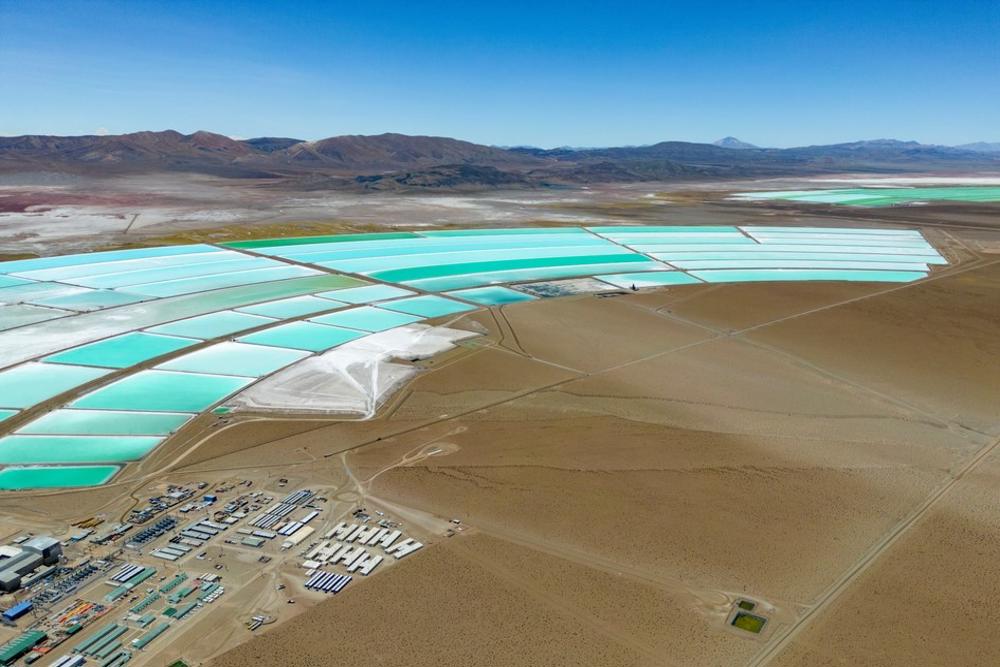
As the world races toward a clean energy future, the demand for critical minerals such as lithium, cobalt, nickel, copper, and rare earth elements has surged.
These materials are essential for technologies driving global decarbonisation, including electric vehicle batteries, wind turbines, hydrogen electrolysers, and solar panels.
However, their extraction and processing often come with significant environmental challenges.
To address these concerns, the concept of “green minerals” has emerged — referring to minerals extracted and processed using sustainable, low-carbon methods.
This approach aims to reduce the environmental impact of mining while ensuring a reliable supply of ethically sourced materials critical for clean energy technologies.
Australia is uniquely positioned to become a global leader in green minerals due to its vast reserves of critical materials and abundant renewable energy resources.
According to Professor Ismet Canbulat, Head of the School of Minerals and Energy Resources Engineering (MERE) at UNSW Sydney, government action is crucial to facilitating this transition.
“Targeted policy support and an enabling regulatory environment are essential to advance green critical minerals production,” he stated.
He also highlighted the private sector’s role in providing funding and technological innovations needed for sustainable mining practices.
The Australian government’s Critical Minerals Strategy 2023-2030 outlines plans to expand domestic processing capabilities, invest in green hydrogen for mineral refining, and encourage research into sustainable mining technologies.
These initiatives aim to strengthen Australia’s position as a reliable supplier of green minerals to international markets such as the United States, European Union, and Japan.
Despite its advantages, transitioning to green mining practices presents several challenges:
- High Costs: Implementing renewable energy infrastructure and advanced processing technologies requires significant investment.
- Geopolitical Risks: The global supply chain for critical minerals is heavily concentrated in a few countries, with China dominating rare earth element processing.
- Infrastructure Limitations: Many mining operations are located in remote areas with limited access to renewable energy sources.
- Workforce Shortages: A lack of skilled workers trained in advanced mining technologies hinders progress.
- Market Acceptance: Green minerals often cost more to produce than traditionally mined materials. Without incentives like carbon credits or tax breaks, companies may be reluctant to invest.
Professor Serkan Saydam from UNSW’s NextGenMIN Initiative highlighted the need for innovation in mining systems.
“Our initiative aims to develop zero-waste, zero-emissions mining systems that balance sustainability with minimal environmental impact,” he said.
Several strategies are being adopted globally to make mining more sustainable:
- Renewable Energy Integration: Mining operations are increasingly powered by solar, wind, and hydroelectric energy. For example, BHP’s Nickel West mine in Australia now runs on solar energy.
- Electrification of Equipment: Companies are transitioning from diesel-powered machinery to battery-electric or hydrogen-powered alternatives.
- Carbon Capture Technologies: Mines are implementing CO2 sequestration methods to reduce emissions.
- Circular Economy Practices: Recycling lithium-ion batteries and extracting valuable elements like cobalt and nickel from used batteries help reduce reliance on newly mined materials.
- Traceability Initiatives: Certification schemes such as Australia’s Guarantee of Origin ensure that minerals meet stringent environmental standards.
UNSW Sydney’s School of Minerals and Energy Resources Engineering is at the forefront of advancing sustainable mining practices.
The school ranks first in Australia and second globally for Mineral and Mining Engineering (QS World University Rankings 2025).
Its research focuses on innovative solutions such as CO2 sequestration and clean energy generation through geothermal engineering.
Dr Rahman Daiyan from UNSW underscored the importance of strategic minerals for global decarbonisation efforts.
“Strategic minerals provide the backbone for clean energy technologies but face challenges like climate risks and decreasing ore grades,” he explained.
Open-source tools developed by UNSW researchers aim to assess green mineral value chains and drive industry transformation.
As demand for strategic minerals grows exponentially — projected by the International Energy Agency (IEA) to increase sixfold by 2050 — the transition toward sustainable mining practices is imperative.
With its rich resources and commitment to innovation, Australia has a unique opportunity to lead this global shift while addressing environmental concerns associated with traditional mining methods.
By combining government support with private-sector investment and cutting-edge research initiatives like UNSW’s NextGenMIN program, Australia can cement its position as a pioneer in green minerals production, ensuring that the clean energy revolution is truly sustainable.










